How Did Uber Implement Their Growth Strategy?
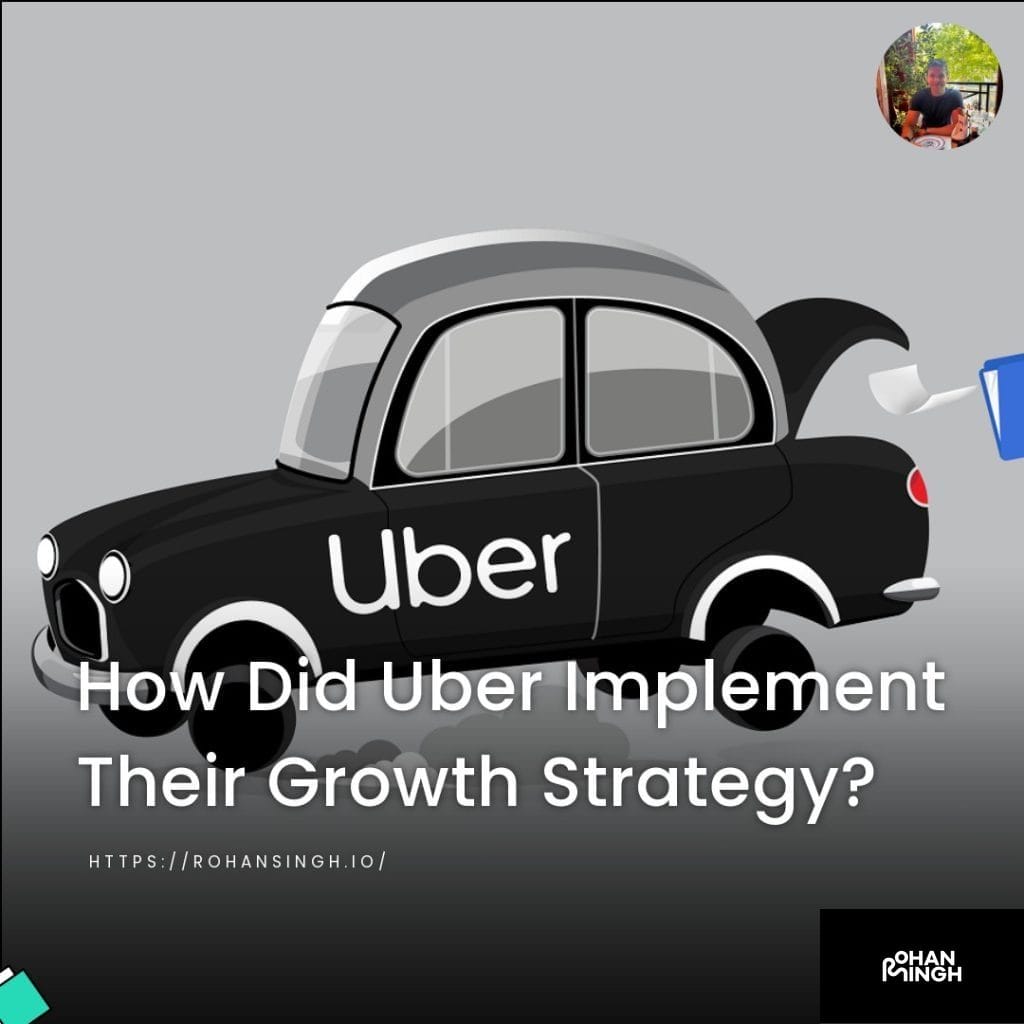
Uber, the ride-hailing giant, has always been known for its aggressive growth strategy. The company started in San Francisco in 2010, and since then, it has expanded its services to more than 900 metropolitan areas across the globe. So, how did Uber implement its growth strategy?
Table of Contents
ToggleFirstly, Uber’s success can be attributed to its innovative business model. Unlike traditional taxi companies, Uber is fuelled by a sharing economy business model, which enables the company to tap into the supply of independent contractors. This approach has helped Uber to scale quickly while keeping costs low. Additionally, Uber’s market entry strategy, which involves entering new markets rapidly and then establishing a local presence with a team of drivers, has played a significant role in its growth trajectory.
Another aspect of Uber’s growth strategy is its focus on user experience. Uber has always prioritized consumer satisfaction, and it does so by investing in cutting-edge mobile technology that provides a seamless experience to its users. Features such as the surge pricing model and messaging app have enabled Uber to tailor its services to meet the demands of its customer base.
Uber’s growth strategy also involves diversification. The company has expanded into various business segments, such as UberEats, Uber Freight, and has invested heavily in the development of self-driving cars. These moves have helped to expand Uber’s addressable market and revenue streams.
In conclusion, Uber’s success can be attributed to a culmination of factors that have enabled it to maintain an aggressive growth strategy. From its innovative business model to its focus on user experience and diversification into various business segments, Uber has built a solid growth foundation. Such efforts have ultimately paid off, cementing Uber’s position as one of the most fascinating companies in the tech startup ecosystem.
Background of Uber
Uber, the ride-sharing giant, revolutionized the entire taxi industry by offering a convenient way for people to commute. Founded in 2009, Uber’s mission was to provide an alternative to traditional taxis. With their innovative business model and technology, they quickly gained a significant market share, disrupting traditional taxi companies. Uber has grown exponentially since its inception, and today it is one of the most valuable technology companies worldwide, with a market capitalization of over $100 billion. In this article, we will take a deep dive into Uber’s growth strategy, expansion plans, marketing tools, and innovative ideas that enabled them to achieve unprecedented success.
Let's talk about your future project!
Eager to collaborate on your upcoming endeavor? Let's explore and ignite the potential of your next big idea, shaping a promising future together!
How Was Uber Built?
Uber was founded in 2009 by Travis Kalanick and Garrett Camp, two entrepreneurs who had the idea of hailing a taxi through a mobile app. The idea came to them when they were attending a tech conference in Paris. They were unable to find a taxi and thought it would be convenient to have a mobile app that would allow them to request a ride with just a few clicks.
When they first pitched the idea to potential investors, they faced several challenges. Many investors were skeptical about the viability of the business model and were concerned about regulatory issues. On top of that, the global recession made it difficult to secure funding. However, the founders were undeterred and continued to pitch the idea to investors. In 2010, they managed to raise $1.25 million in funding from investors, which gave them the capital they needed to launch the service.
Since then, Uber has grown rapidly, expanding to more than 900 cities around the world and becoming one of the most valuable companies in the world with a market capitalization of more than $70 billion. Some of the key milestones in the company’s growth include the launch of UberX in 2012, which allowed regular people to sign up to become drivers, the launch of UberEATS in 2015, which allowed users to order food from their favorite restaurants, and the launch of UberPOOL in 2016, which allowed users to share rides and save money.
Despite the challenges they faced when they first started, Kalanick and Camp’s vision of a mobile app that could revolutionize the taxi industry has become a reality. Today, Uber is known for its convenient user experience and expansive customer base and has become a symbol of the sharing economy and gig economy.
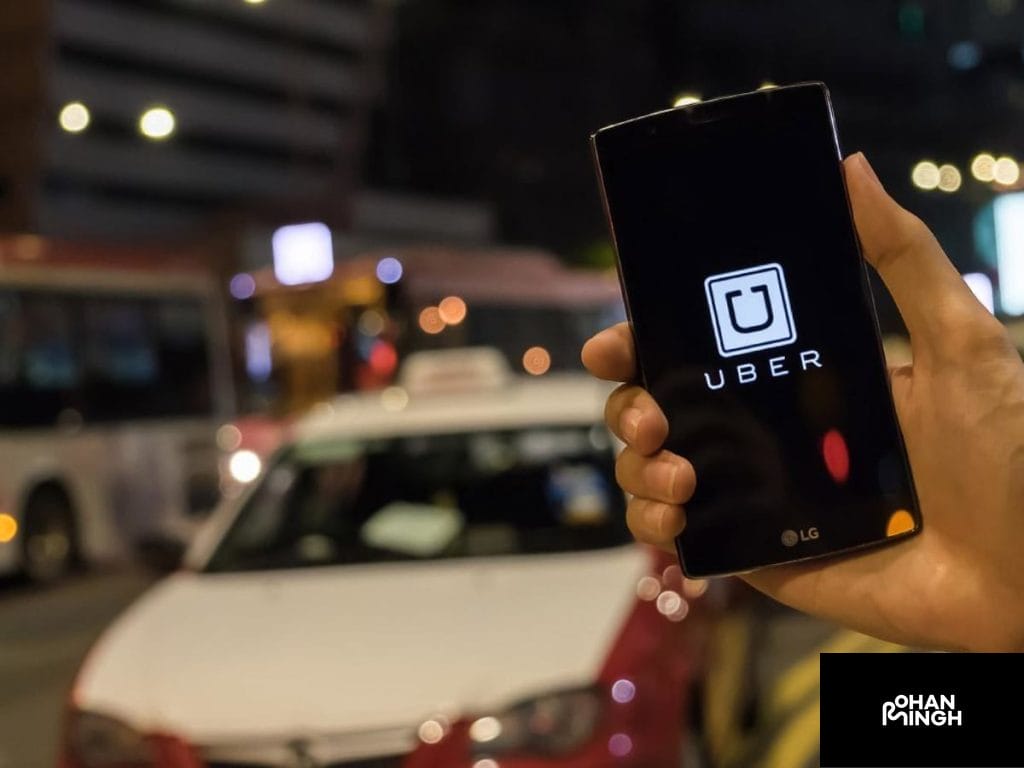
Where Did Uber Get Its Name?
When Uber’s co-founders were searching for a brand name, they knew that it needed to be something that could be easily recognized and pronounced all around the world. They brainstormed for several weeks and came up with several possibilities for their company name. One of their early iterations was called “UberCab,” as it accurately described the premium, luxury service that they were offering.
Eventually, the founders decided to shorten the name to just Uber, which still carried the essence of what they were trying to achieve. The origin of the name is the German word “Uber,” which translates to “above” or “super.” This name suited the company’s goal of providing a premium experience that stood “above” traditional taxi companies. The founders also wanted a name that was catchy and easy to remember, which certainly seems to be the case with Uber. From this perspective, it’s clear that Uber’s name is a key element of its branding and growth strategy.
How does Uber work & make money?
Uber’s business model is based on the two sides of the platform: drivers and riders. Drivers work as independent contractors and are responsible for their expenses, such as gas, car maintenance, and insurance. Riders, on the other hand, pay a fare based on time and distance, with surge pricing during peak demand times. This is how Uber makes money.
In addition to its ride-hailing service, Uber offers other services that contribute to the company’s revenue streams. Uber Eats, for example, is a food delivery service that partners with restaurants to provide on-demand meal delivery to users. The company also offers freight delivery through Uber Freight, which connects shippers and carriers to streamline the logistics process.
To generate revenue, Uber levies various charges. For example, riders may be charged booking fees or cancellation fees, and drivers are charged a commission fee for each ride they complete. Surge pricing during peak demand times can also increase fares for riders, generating additional revenue for Uber.
Overall, Uber’s business model has propelled them to become one of the most successful companies in the ride-hailing industry. With their various revenue streams and innovative approach to transportation, Uber continues to dominate the market and innovate new ways to grow and expand their brand.
What is the current revenue model of Uber?
One of the primary sources of income for Uber is the fee charged for every ride. This fee is often composed of a base fare, a per-minute charge, and a per-mile charge. However, Uber also has other sources of income that help sustain the company’s revenue model. One of these sources is the surge pricing model, which is applied during peak demand periods.
In recent years, Uber has also begun monetizing its app through advertising and partnerships with other businesses. For example, the company has partnered with various brands for promotional campaigns, which are highlighted within the app. Uber has also expanded into new markets, including food delivery services and freight delivery, with the introduction of Uber Eats and Uber Freight. These new business segments have added to the company’s overall revenue, creating more room for growth and profitability in the coming years.

How Uber Grows Its Popularity?
Uber has become a ubiquitous name when it comes to ride-hailing services. The company’s growth strategy has been a fascinating case study for MBA interns and business students alike. One of the primary components of its strategy is mobile technology. By providing users with a user-friendly and intuitive mobile app, Uber has made it incredibly easy for people to book a ride with a few taps on their phones. Combined with its surge pricing model, which adjusts fares based on demand, the company has been able to offer its customers flexible and affordable transportation options.
To further solidify its position in the market, Uber markets its services through various channels. Social media advertising, for example, can be a powerful tool for reaching new customers and increasing brand awareness. Additionally, Uber has partnered with local businesses to offer exclusive promotions and incentives to users, encouraging people to choose the Uber service over traditional taxis or competitors like Lyft.
Another important component of Uber’s growth strategy is its referral program. By offering both drivers and users incentives to invite others to sign up for the Uber service, the company has been able to rapidly expand its customer and driver base. This incentivization of word-of-mouth marketing has helped Uber build a loyal following of users who trust and recommend the service to their friends and family.
To further enhance the customer experience, Uber has also implemented features like in-app messaging, allowing users to communicate directly with their drivers. This personalized touch helps to build loyalty and create repeat customers. Additionally, Uber’s personalized promotions, which offer discounts and other incentives tailored to individual users, make the service even more convenient, compelling, and irresistible.
Lastly, Uber has invested heavily in research and development to expand and diversify its services in the long run. Its self-driving cars initiative is one such example of a technology that the company believes will benefit its growth strategy for years to come. By developing a reputation for innovation and staying ahead of the curve, Uber has been able to maintain its position as a leading player in the ride-hailing industry.
How Much Do Uber Drivers Make?
The income streams for Uber drivers differ based on the time spent per ride, the number of trips they complete, and even surge pricing. Earning potentials vary based on different factors, such as market demand, the time of day, and the location of the rides. Uber drivers have the potential to earn money from various streams. The app offers incentives for drivers to complete a certain number of trips within a particular time frame to qualify for bonuses. Passengers can also tip drivers, and Uber offers referral bonuses for bringing on new drivers to the platform.
Drivers’ earnings are highly impacted by the rating system caused by the reviews left by passengers. Passengers can rate drivers on a scale of 1 to 5 stars after completing a ride, which determines the quality of their service and the inclination of future riders to choose them as their drivers. High ratings can increase earning potential, boost visibility and add to the driver’s credibility.
Earnings for drivers can also vary depending on their region and market demand. According to a report by Ridester, the average Uber driver in the US earns around $13.70 per hour after expenses. However, these earnings are not consistent throughout the world. For example, while Uber drivers might earn $30 per hour in New York City, they may only make $9 per hour in other regions. It’s important to keep in mind that factors such as the cost of living, driver demand, and variations in local labor laws play a role in determining driver pay across regions.
Who is Uber's competitor?
Uber is a prominent player in the ride-hailing industry, but it faces tough competition from other players in the market. Let’s take a look at some of Uber’s biggest competitors.
First on the list is Lyft, Uber’s primary competitor in the United States. With a target market focused on the US, Lyft has gradually taken a fair share of the market from Uber. Lyft has a user-friendly app, a seamless user experience, and friendly customer support, which has helped it attract users. However, its limited global presence and smaller customer base compared to Uber are major drawbacks that have hindered its growth.
Another of Uber’s fierce competitors is Grab, dominating the ride-hailing industry in Southeast Asia. Grab has grown significantly over the years, capturing a substantial share of the market in countries like Singapore, Indonesia, and Malaysia. Beyond ride-sharing, they also offer food delivery and payment services. Its partnership with several local taxi companies has worked to its advantage, allowing it to meet the needs of different categories of riders, including those who prefer traditional taxis. However, the company’s growth has been affected by heavy competition with other players, and its recent acquisition by Gojek has caused a few setbacks.
Lastly, DiDi is another major competitor of Uber, dominating the Chinese market. The company boasts a strong user base, with over 550 million active users, and drivers can earn more money with DiDi due to the low commission they charge compared to Uber. Despite regulatory probes and challenges faced by the company due to data privacy, DiDi has been consistently expanding to other countries like Russia, Australia, and Costa Rica. However, DiDi’s focus on the Chinese market, language barriers, and limited international presence are limiting factors that may hinder its growth.
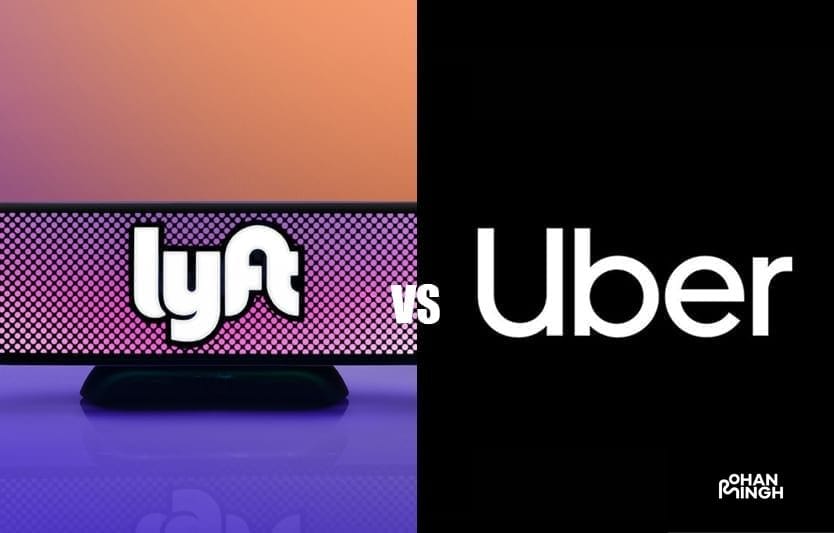
Which Is Bigger, Uber or Lyft?
When it comes to ride-sharing companies, Uber and Lyft are household names that come to mind. The two companies may share the same business model, but the differences between them are noteworthy. Uber has a larger market share, serving over 700 cities globally, while Lyft operates in over 650 cities in the United States and Canada. Uber has a significantly larger customer base, with more than 110 million active users compared to Lyft’s 30 million. Additionally, Uber has more than 93 million drivers compared to Lyft’s approximately 3 million.
What contributes to the substantial differences between the two firms? It’s mostly due to their pricing and marketing strategies, market expansion strategies, and innovations. Uber’s aggressive growth strategy, which has been core to the company’s success, has helped to increase its market share and customer base. The company has diversified its offerings, including food delivery service (Uber Eats), and has introduced modes of transportation beyond cars, such as bicycles and electric scooters. Meanwhile, Lyft has stayed mostly focused on expanding its share of the US market.
Financially, both companies have seen impressive growth in the past few years. Uber’s growth is particularly noteworthy, as its market capitalization went from $60 billion in May 2019 to $72 billion in February 2020 before the COVID-19 pandemic hit. From 2018 to 2019, Uber’s revenue grew by 26%, and Lyft’s by 68%. However, in terms of financial performance, Uber has had its fair share of criticism, with concerns about its aggressive spending on growth instead of profitability. Nonetheless, both companies continue to make strides in their expansion and growth strategies.
Market Share and Business Model
Market share is a crucial metric that measures a company’s success and growth in a particular industry. Uber’s aggressive growth strategy has helped the company to grow its market share in the ride-hailing industry rapidly. According to Statista, the company commanded nearly 69% of the US ride-hailing market in 2019 compared to Lyft’s 31%. This market share has enabled them to control fares, boost revenues, and maintain a supply of drivers.
Uber’s business model is based on the sharing economy and independent contractors. This model has allowed the company to grow rapidly, expand into new markets and disrupt the traditional cab industry. Uber does not own any vehicles; instead, the company provides a mobile technology platform that connects passengers with drivers. The surge pricing model that Uber uses helps the company to balance supply and demand in real-time while leveraging the company’s vast amount of data to predict where and when people need rides. The business model continues to prove viable, as demonstrated by Uber’s market capitalization, which was estimated to be at $72 billion during the company’s IPO in 2019.
What is Unique about Uber's business model?
With the advent of mobile technology, Uber has disrupted the traditional taxi business model by providing an easy-to-use platform that allows people to hail rides with just a few swipes on their smartphones. This has revolutionized the ride-hailing industry as we know it. One of the key features that set Uber apart is the use of independent contractors as drivers, which enables them to keep their overhead costs low as they don’t have to worry about salaries or benefits. This, in turn, allows them to offer cheaper fares to their users.
Another unique feature is Uber’s surge pricing model. During peak times when demand is high, Uber charges a higher fare to incentivize more drivers to come onto the platform, thus ensuring a steady supply of drivers. This innovative model has allowed them to manage supply and demand effectively.
Uber has also expanded beyond ride-hailing into different business segments. UberEATS, launched in 2015, is their food delivery service which has been growing rapidly. Its recent expansion into logistics and self-driving cars is another reflection of its aggressive growth strategy. Uber’s business model is a perfect example of the sharing economy concept where people are empowered to share resources and monetize their idle assets.
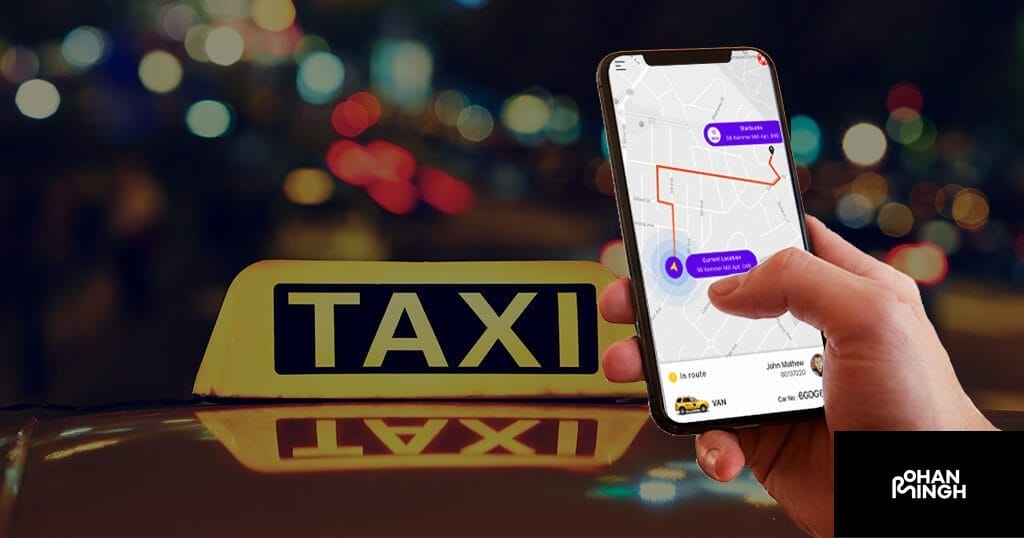
Overview of Uber’s Growth Strategy
Since its launch in 2010, Uber has revolutionized the ride-hailing industry and grown to become a household name in over 900 cities worldwide. Uber’s growth strategy has played a pivotal role in its success, and a deep understanding of the key drivers of this strategy can provide valuable insights for startups and established businesses alike.
Uber’s growth strategy centers on four main pillars: market penetration, product diversification, strategic partnerships, and innovation. To achieve these objectives, Uber has adopted an aggressive expansion strategy, stormed its way into new markets, and disrupted traditional transportation services.
Over the years, Uber has recorded several significant milestones, such as its expansion into China, the launch of the Uber Eats platform, and the introduction of self-driving cars, among others. In China, for example, Uber spent over $1 billion to capture a sizeable share of the market. Despite these efforts, it had to withdraw after a costly price war with Didi Chuxing.
Uber’s overarching vision is to become a one-stop shop for all kinds of transportation needs. Its success has largely been fueled by its focus on leveraging technology and innovation to create a superior user experience. The company has invested heavily in developing its mobile app, which has become a crucial tool for millions of users worldwide.
In summary, Uber’s growth strategy is anchored on aggressive expansion, diversification into new products and services, and leveraging technology and innovation to create a superior user experience. The success of this strategy is evident in the company’s explosive growth, which has led to increased market share and a market capitalization of over $60 billion as of June 2021.
Expansion into New Markets
Uber’s expansion into new markets has been a key focus of the company’s aggressive growth strategy. Before entering a new region, Uber conducts thorough research to determine the population density, level of competition, and existing transportation infrastructure. This allows the company to tailor its services to each market and develop pricing strategies that align with local demand.
One of the most significant challenges that Uber has faced in its expansion efforts is regulatory hurdles. Many cities and countries have imposed restrictions or outright bans on ride-hailing services, citing concerns about safety and unfair competition with traditional taxi companies. Despite these challenges, Uber has continued to push forward with its expansion plans, often relying on partnerships with local transportation companies or regulatory bodies to secure its place in new markets.
Despite initial opposition, Uber’s approach to geographical expansion has proven successful in many regions, with the company rapidly gaining adoption by both customers and drivers. In the coming years, Uber plans to continue its global expansion and increase its market share in existing markets, leveraging innovative strategies and partnerships to overcome any challenges that may arise along the way.
Increasing Market Share in Existing Markets
One of the key components of Uber’s growth strategy has been increasing its market share in regions where it already operates. To achieve this, Uber has utilized a variety of regional strategies tailored to the unique characteristics and preferences of each market. For instance, in China, Uber implemented a joint venture with Chinese ride-hailing service Didi Chuxing to gain a foothold in the market. This allowed Uber to tap into Didi’s extensive network of drivers and users while still maintaining independent branding. In other regions, Uber has focused on acquiring small local ride-sharing companies and integrating them into its service.
One of the reasons why Uber has been so successful in increasing its customer base is because it has been able to differentiate itself from traditional taxi companies and other ride-hailing services. Uber has been able to offer customers a more convenient and reliable transportation option with features such as real-time tracking, cashless payments, and a user-friendly mobile app. Additionally, Uber has been able to leverage its aggressive marketing campaigns to generate buzz and attract new customers to its platform. These tactics have helped Uber’s customer base grow rapidly and dominate many markets where it operates.
By implementing these strategies, Uber has been able to further expand its market and customer base, resulting in impressive growth figures. For example, in the first quarter of 2021, Uber reported gross bookings of over $19 billion, with over 98 million active users. Consequently, Uber has successfully implemented regional and market differentiation strategies that have helped the company become a leader in the ride-hailing industry.

Strategies for Attracting Customers and Drivers
Uber’s aggressive growth strategy has helped the ride-hailing company become one of the most recognizable brands in the world. Uber has implemented several strategies to attract customers and drivers including customer acquisition, referral programs, targeted marketing, and driver incentives.
To attract new customers, Uber has implemented a variety of referral programs that incentivize both the existing user and new users with free rides. This strategy has been highly effective for Uber, as it provides an incentive for current users to introduce new users to the platform. Additionally, targeted marketing campaigns have been crucial in attracting new customers to Uber. Through the use of geotargeting and personalized messaging, Uber has been able to increase brand awareness and reach new audiences in the markets where it operates.
To attract and retain drivers, Uber has implemented a driver incentive program that rewards drivers for meeting certain performance metrics. This has been crucial in ensuring that Uber has a reliable supply of drivers to meet the demands of its growing customer base. In addition, Uber has also implemented a feature that allows drivers to earn additional income by delivering food via Uber Eats. This has helped Uber to diversify its business segments and maintain its position as a leader in the sharing economy.
Overall, Uber’s innovative approach to marketing and driver incentives has been instrumental in attracting both customers and drivers. This, coupled with its commitment to ensuring safety and reliability, has helped Uber to become a dominant player in the ride-hailing industry and a fascinating company to watch.
San Francisco as a Major Hub for Uber's Growth Strategy
San Francisco is the birthplace of Uber and remains a major hub for the company’s growth strategy. As a tech hub and a city in high demand for ride services, San Francisco was a logical place for Uber to launch and test its model. Today, San Francisco continues to be an important market for Uber and serves as a testing ground for new products and services. In this section, we’ll explore why San Francisco plays such a crucial role in Uber’s growth strategy.
Impact on Taxi Companies in San Francisco
Uber’s aggressive growth strategy has disrupted the traditional cab companies in San Francisco. When Uber launched in San Francisco, it offered an innovative service that not only made hailing a ride easier but also provided a cheaper and more efficient way to commute. This strategy resonated with the residents of San Francisco who embraced it wholeheartedly. The rise of Uber disrupted the taxi industry and prompted many San Francisco taxi companies to adjust their business models to respond to the competition.
The impact of Uber’s growth strategy on traditional taxi companies in San Francisco can be seen in the changing market share and customer base. The market share of traditional cab companies dwindled as more people switched to using Uber. The number of customers that depended on traditional taxi services also declined rapidly. As a result, San Francisco’s traditional cab companies lost a significant portion of their revenue streams, which made it challenging for their businesses to survive.
Controversies and conflicts arose between Uber and the taxi companies in San Francisco. They accused Uber of operating as a taxi company but not adhering to the same regulatory standards and requirements. The traditional cab companies also claimed that Uber was hurting their businesses and that they should be subjected to the same regulations that governed the traditional cab industry. The friction between Uber and the traditional cab companies in San Francisco created a difficult environment for both parties.
The regulatory bodies have responded to the competition between traditional taxis and ride-hailing services by introducing new measures to monitor and regulate the ride-hailing industry. However, despite these efforts, Uber’s aggressive growth strategy has continued to affect the traditional taxi industry in San Francisco. The market share of traditional cab companies has declined, and many companies are struggling to stay afloat.

Role of Annual Tech Conference in Promoting Uber's Brand Image
Uber’s growth strategy heavily relies on attending and sponsoring technology conferences and events globally, enabling it to showcase its brand, network with other companies, and promote its image as a leading technology company in the ride-hailing industry. More noticeably, the annual tech conference has played a significant role in promoting Uber’s brand image. These conferences serve as an important platform for Uber to highlight its achievements, strengthen partnerships with other companies, and demonstrate to its user base that it is continuously evolving to meet its needs.
The benefits of attending conferences such as technology summits, investor conferences, and trade shows are immense. Such conferences provide ample opportunities for businesses to learn from peers, as well as providing a chance to showcase new products and services. Uber has exhibited at various well-known industry events such as TechCrunch Disrupt, Web Summit, and the Code Conference to present its vision and discuss new technology innovations with potential investors. By being present at these conferences, Uber has increased its reach and influence in the market, which will be beneficial in the long run.
Apart from networking, Uber uses these events to accelerate its growth and innovation strategy. During these conferences, significant emphasis is put on marketing campaigns and brand promotions. The company uses various messaging and promotional strategies to separate itself from other businesses in the ride-hailing industry. Uber has consistently made a bold statement through its innovative marketing campaigns such as Start Moving Forward, AirFox, Detour, and UberX, which have all helped in building brand credibility and growing the user base. Thus, the role of annual technology conferences in promoting Uber’s brand image and increasing its customer base has been crucial to its growth strategy.
Expansion Into Other Services and Industries
Uber’s growth strategy has always been aggressive and innovative. The company started by disrupting the traditional taxi industry but has since expanded into other services such as Uber Eats and Uber Freight. As part of its expansion and growth strategy, Uber has identified new areas for growth in other industries, such as healthcare. In fact, in the summer of 2020, Uber hired an MBA intern for Uber Health to explore potential opportunities for growth and expansion in the healthcare industry. In this section, we will discuss how Uber has successfully expanded into new industries and services, and their plans to continue doing so in the future.
One of the most notable examples of Uber’s expansion into other services is Uber Eats. The food delivery service started as a small pilot program in 2014 and has since grown rapidly, expanding to over 500 cities worldwide. Uber Eats allows Uber to tap into a new market and diversify their revenue streams beyond ride-hailing. Uber CEO Dara Khosrowshahi has stated that Uber Eats is now one of the top three meal delivery services in the world.
But it’s not just about food delivery. Uber has also entered the freight industry with Uber Freight. Launched in 2017, Uber Freight allows shippers and carriers to connect and streamline the logistics process. This expansion has not only allowed Uber to diversify its business model but has also helped shippers save time and money.
Looking ahead, Uber plans to continue expanding into other industries and services. For example, they recently announced plans to launch their messaging app for drivers and riders, helping to streamline communication and improve the overall user experience. With its aggressive growth and innovation strategy, it’s exciting to see what other industries Uber will disrupt in the years to come.
Food Delivery Service with Uber Eats
Uber has undoubtedly disrupted the ride-hailing industry. However, it’s not just about transportation. One of the most noteworthy expansions Uber has made into the food delivery service with Uber Eats. The company’s aggressive growth strategy has propelled Uber Eats into one of the biggest players in this market, with the service being available in over 6000 cities and 45 countries worldwide. This has been achieved by leveraging Uber’s existing user base, technology, and logistics network. The service has proven to be a great revenue stream for Uber, with Uber Eats generating over $4.8 billion in gross bookings in 2020.
Food delivery service has been a crucial segment of Uber’s growth strategy, and it has had a significant impact on the company’s expansion. Expanding into this market has allowed Uber to diversify its offerings and reach a broader customer base. Uber Eats has helped the company gain a firm foothold in the food delivery industry, where it competes with services like DoorDash, Postmates, and Grubhub. Uber’s expansion into food delivery service has been a wise strategic move as it has gained the company more market share and a deeper understanding of the food delivery industry.
To fuel Uber’s growth in this segment, the company has struck several key partnerships and acquisitions. In 2020, Uber acquired Postmates, a food delivery service that operates in the United States, to expand its offerings further. Uber has also partnered with restaurants and food chains to provide customers with more options, better prices, and faster delivery. Uber Eats has become a robust player in the industry, and it doesn’t seem that the company is slowing down anytime soon with it.

Launch of the Uber Freight Service
The concept of Uber Freight has been one of the critical components of Uber’s growth strategy, and it has been a game-changer for the ride-hailing giant. Since its debut in 2017, the service has offered shippers and carriers a platform to access reliable transportation options easily. Uber Freight operates as a mobile app that connects shippers with carriers to make freight transportation fast, inexpensive, and reliable. With this innovative platform, Uber has expanded its business segments beyond traditional ride-sharing into the global logistics industry.
The benefits of using Uber Freight extend beyond the company’s business segments. The service’s expansion and growth strategy have led to increased efficiency and productivity in the transportation market. With Uber Freight, shippers can access a network of reliable carriers with real-time visibility into their shipments. Moreover, the service offers upfront pricing and fast payment options to drivers, making it an attractive proposition for carriers looking to expand their revenue streams. Significant investments in the technology powering Uber Freight have also helped maintain the company’s competitiveness in the ride-hailing industry, positioning the company to unlock new opportunities for growth and innovation.
Key features of the Uber Freight service include real-time freight visibility, upfront pricing, and fast payments. The app offers personalized dashboards, allowing shippers and carriers to manage their businesses more efficiently with real-time data insights. The platform also provides instantaneous access to rates, enabling shippers to expedite shipments at competitive prices. Uber Freight’s payment process is fast and easy, eliminating the red tape that is characteristic of traditional logistic payment systems. The service’s target market comprises shippers and carriers who can access the platform through the mobile app. Uber Freight has been a lucrative venture for the company, bringing in revenues worth hundreds of millions of dollars annually.
Development of Self-Driving Cars
Uber’s development of self-driving cars is a key component of its growth strategy. The company’s aggressive approach to innovation has led them to invest heavily in cutting-edge technology capable of disrupting the ride-hailing industry as we know it. The quest to develop safe and reliable self-driving cars represents a significant opportunity for Uber to expand its user base, improve customer experience, and ultimately generate greater profits.
The impact of self-driving cars will be felt across both the ride-hailing and traditional taxi industries. As technology continues to improve, self-driving cars will become increasingly prevalent, potentially reducing the number of drivers required to meet demand. This shift could have a profound impact on the taxi industry, which has traditionally relied on human drivers to provide services. For Uber specifically, self-driving cars will enable expansion into new markets with increased capacity and reduced operating costs.
From a customer standpoint, self-driving cars will offer numerous benefits such as increased convenience and safety. With no human driver, customers can experience a seamless and efficient transportation solution, free from the potential complications of a human driver. Additionally, self-driving cars have the potential to address safety concerns related to human-error accidents and incidents.
However, despite the potential benefits, there are significant challenges associated with developing self-driving cars. Safety concerns, legal issues, and public perception are all hurdles Uber must address to fully integrate self-driving cars into its service offering. The company is investing heavily in research and development to overcome these challenges and is committed to finding solutions that will enable safe and reliable autonomous vehicles on the road.
User Experience as a Critical Part of Its Growth Strategy
User experience plays a critical part in any successful business strategy, and Uber is no exception. As an on-demand ride-hailing platform, Uber’s growth and success rely on providing its users with a seamless and enjoyable experience. From the ease of booking a ride through the app to the cleanliness of the vehicle and the behavior of the driver, every aspect of the user’s journey impacts their experience with the brand. In this section, we will explore how Uber prioritizes user experience as a critical part of its growth strategy.

Enhancing Customer Experience
Uber’s growth strategy has always focused on providing the best possible customer experience. From the start, the company has utilized technology to develop features, services, and solutions that improve user experience. One of the most notable features that set Uber apart from traditional taxi companies is its surge pricing model. This dynamic pricing strategy allows Uber to adjust prices based on supply and demand, which helps to ensure that there are always drivers available for passengers seeking a ride. This approach has proven successful in attracting more riders and drivers to Uber, and it has also helped the company to maintain a competitive edge in the ride-hailing industry.
Another key feature of Uber’s growth strategy is its in-app messaging system. This feature makes it easy for riders and drivers to communicate with each other, providing enhanced convenience and flexibility. Riders can use the messaging app to communicate with their drivers about pickup locations, estimated arrival times, and other important details. Meanwhile, drivers can use the app to ask questions or let riders know about traffic delays or other issues that may arise. By facilitating communication between riders and drivers, Uber can significantly improve the user experience, reducing downtime and stress for both parties.
Uber’s rating system is another critical component of its growth strategy. The company uses data to optimize its services and to ensure that riders are paired with the best possible drivers for their needs. By collecting feedback on driver performance, rider experience, and other key metrics, Uber can identify areas for improvement and implement changes that enhance the overall user experience. Additionally, the rating system helps to ensure that drivers are incentivized to provide excellent service, which is key to retaining and attracting new customers.
One of the keys to Uber’s success is its corporate culture, which values customer feedback and encourages innovation. The company is always seeking ways to improve the user experience, and it places a high priority on providing excellent customer service. By actively soliciting feedback from its customers and making changes based on that feedback, Uber has been able to continuously improve its services and retain customer loyalty. This customer-centric approach helps to differentiate Uber from competitors and has been a fundamental element of the company’s growth and innovation strategy.
What Can You Learn from Uber's Growth: Key Takeaways
When it comes to Uber’s growth and success, there are several key takeaways that businesses can learn from. Firstly, it’s important to put customer experience at the forefront of your growth strategy. Uber has always been committed to providing its users with fast, reliable, and affordable transportation options. By putting the needs of its customers first, Uber has been able to build a massive customer base and maintain its competitive edge.
Secondly, businesses can learn from Uber’s innovative approach to market disruption. Uber has been able to capitalize on the sharing economy and the rise of mobile technology to create a viable and disruptive alternative to traditional taxi companies. By staying ahead of trends and being willing to take risks, businesses can also innovate and find new opportunities for growth and expansion.
Another key takeaway is the importance of aggressive growth strategies. Uber has been incredibly focused on expansion and growth, both domestically and internationally. By aggressively pursuing new markets and ramping up its marketing efforts, Uber has been able to rapidly grow its user base and market share. Businesses that are willing to take calculated risks and invest heavily in growth and expansion are more likely to see success.
Lastly, it’s crucial to prioritize innovation and adaptability. Uber has been able to maintain its dominant position in the ride-hailing industry by constantly innovating and adapting to changing market conditions. By staying up-to-date with emerging trends and technologies and being flexible enough to pivot when necessary, businesses can better position themselves for long-term success.
In conclusion, there are many lessons that businesses can learn from Uber’s growth strategy. By prioritizing customer experience, innovation, aggressive growth, and adaptability, businesses can also achieve explosive growth and success in their respective industries.
What are the 5 C's of Uber?
When it comes to growth and expansion, Uber has a clear strategy focused on the 5 C’s: Customers, Connections, Channels, Competition, and Costs. Let’s take a closer look at each one.
First, Uber places a strong focus on its Customers. By providing a seamless user experience and constantly innovating to meet their needs, Uber has created a loyal customer base. The company knows how to listen to its customers and respond to their feedback, which has helped to cultivate a strong brand image. Uber also takes a data-driven approach to customer service, using analytics tools to gather insights and improve the overall experience.
Next, Uber leverages multiple Channels to reach and retain its customers. The company has a strong mobile app that allows users to easily book rides and track their drivers in real time. Uber also uses social media channels, such as Facebook, Twitter, and Instagram, to promote its services and engage with its customers. By providing a variety of channels, Uber can create a comprehensive, omnichannel experience that is accessible to everyone.
When it comes to Competition, Uber sets itself apart from traditional taxis and other ride-sharing services by offering better services and pricing models. The company’s surge pricing model, for example, allows it to adjust pricing in real-time based on demand, which has helped to reduce wait times and create a more efficient service. Uber also invests heavily in research and development, constantly pushing the envelope to stay ahead of its competitors.
Lastly, Uber manages its Costs carefully and effectively. The company’s aggressive growth strategy means that it needs to carefully manage resources to maintain profitability. Uber has achieved this by utilizing a range of financial planning tools and making smart business decisions. For example, the company’s decision to exit the Chinese market in 2016 was based on a careful evaluation of the market and the resources required to be successful there. By focusing on each of the 5 C’s, Uber has built a growth strategy that is both effective and sustainable.
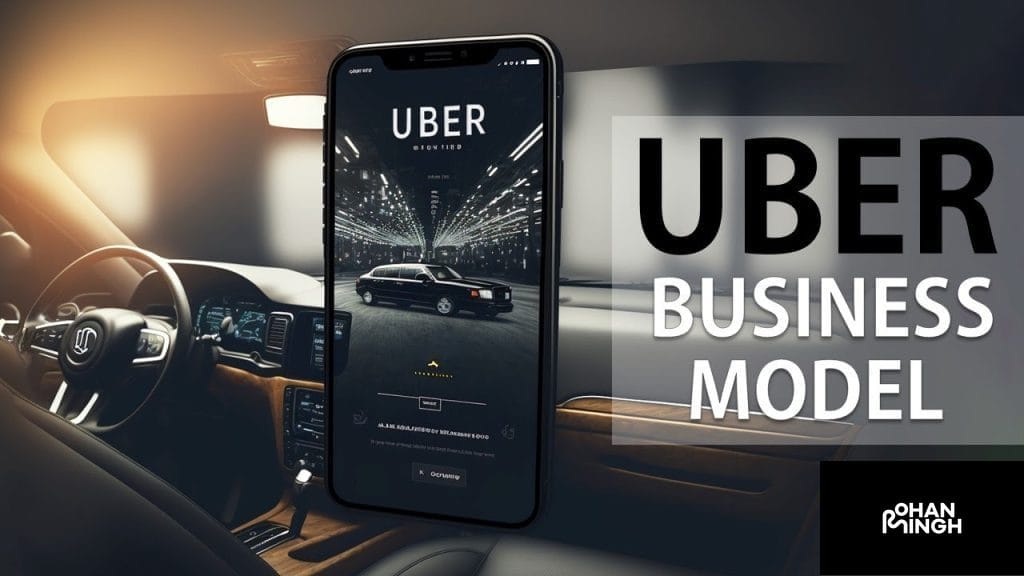
What are the 3 pillars of Uber's business strategy?
Uber has become a household name in the ride-hailing industry, and its explosive growth can be attributed to its solid business strategy. The company has three key pillars to its strategy: diversifying its business segments, constantly innovating its technology, and creating a strong corporate culture.
Diversification has been a key driver of growth for Uber. The company initially started with the ride-hailing segment only but later expanded into food delivery with Uber Eats, freight shipping with Uber Freight, and even public transit with Uber Bus. Diversification has helped to mitigate risks associated with relying solely on one line of business. It has also allowed Uber to target new markets and attract a wider range of customers.
Technology innovation has been another significant pillar of Uber’s strategy. The company has been at the forefront of utilizing mobile technology to provide a seamless user experience and constantly upgrade its services. In addition to introducing intelligent algorithms to optimize routes and suggesting more efficient pick-up locations, Uber has also experimented with self-driving cars and integrated messaging apps to improve communication between drivers and riders. Furthermore, it has expanded its services to include features like “Uber Health- Summer 2020”, which cater to the medical industry.
Creating a strong corporate culture has been the third pillar of Uber’s business strategy. Uber has championed a “work hard, play hard” mentality that has encouraged its employees to take risks and think innovatively. This culture has helped the company attract top talent, and it has been instrumental to its growth. However, the company has faced challenges over the years, with allegations of poor treatment of drivers, harassment, and misconduct. Recognizing and addressing these challenges, established Uber Growth strategy MBA intern to re-establish trust with its drivers, stakeholders, and users. Uber has also implemented some initiatives to promote diversity, equity, and inclusion, including the “Moving Forward Together” campaign. In conclusion, the combination of diversifying its business segments, constant innovation, and fostering a strong corporate culture have been contributing factors to the success of Uber.
What kind of strategy does Uber use?
Uber’s success as a global ride-hailing giant can be attributed to its aggressive growth strategy. The company’s growth strategy involves various tactics, including market expansion, customer acquisition, service diversification, technological innovation, and a strong corporate culture.
One of Uber’s primary growth strategies is market expansion. By entering new markets, Uber can increase its customer base and revenue streams while remaining competitive in the ride-hailing industry. Moreover, the company has employed a comprehensive approach to entering new markets, which includes deploying a team of MBA Interns to achieve its goal.
Uber’s customer acquisition strategy is a significant driver of business growth. The company has been actively acquiring new customers, thanks to its user-friendly interface and affordable pricing. To date, Uber has more than 100 million active users across the world, putting the company in a favorable position to dominate the ride-hailing industry.
Another key component of Uber’s growth strategy is service diversification. The company has extended its service offerings, such as the Uber Eats strategy for growth, into other industries, like food delivery, freight shipping, and even public transit with Uber Bus. This move helps to mitigate the risks associated with relying solely on one line of business. Diversification allows the company to target new markets and attract a wider range of customers, particularly those interested in food delivery services.
Aside from Uber’s service diversification, the company’s technological innovation strategy has significantly boosted its business growth. The company has been continuously upgrading its existing services while introducing new features using data analytics to make informed business decisions. Moreover, Uber has also experimented with self-driving cars, an ambitious side of its innovation strategy.
When entering new markets, Uber employs various strategies to adapt to local regulations and culture. The company has faced regulatory and cultural challenges while trying to penetrate some new markets. However, it has been successful in overcoming these challenges by collaborating with local government authorities, launching local initiatives, and adapting its services to local needs.
Finally, a strong corporate culture and leadership have significantly influenced Uber’s success. The company’s corporate culture has placed a strong emphasis on rapid pace, innovation, and a focus on data-driven decision-making. With aggressive growth strategies and innovative culture, Uber has been able to maintain its position as one of the most fascinating companies in the world.
What is the key to Uber's success?
Uber’s success can be attributed to several key factors. First and foremost, the company has differentiated itself in the market by prioritizing user experience. From the easy-to-use app interface to the ability to track your driver’s location, the company has focused on creating a seamless experience for its users. This strategy has paid off, as Uber has amassed a large customer base that continues to grow rapidly.
Another factor contributing to Uber’s success is the efficient supply of drivers. The company has implemented various incentives that attract more drivers, such as flexible schedules and the ability to earn additional income. With a reliable supply of drivers, Uber can provide quick and easy transportation for users, which has been a major selling point. Additionally, the use of surge pricing has allowed Uber to maintain a steady supply of drivers during peak hours while providing users with transparent pricing.
In addition to being successful in the ride-hailing industry, Uber has been able to scale its business model to expand into other markets such as food delivery through Uber Eats and self-driving technology. By continuously innovating and entering new markets, Uber has been able to stay ahead of its competitors. This shows that the company has a solid expansion and growth strategy that allows it to tap into new market segments while leveraging its existing user base.

Final Thoughts
Overall, Uber’s growth strategy has been aggressive and innovative, which has allowed the company to expand rapidly and become one of the most fascinating companies in the sharing economy. From establishing a strong market share through its ride-hailing service to entering new markets with services like Uber Eats and Uber Freight, the company has always been focused on maintaining its position as a market leader. Additionally, Uber’s focus on user experience and customer base has allowed it to differentiate itself from traditional cab companies and win over millions of users worldwide. In the coming years, Uber is set to grow even further, thanks to its commitment to continuous innovation and its ability to adapt to changing market trends. Exciting initiatives such as self-driving cars and new revenue streams like Uber Health should only add to the company’s already impressive growth and success.
What Marketing Strategy Did Cheetos Employ for Plants vs. Zombies Collaboration?
Rohan Singh | May 1, 2024 | Acquisition What Marketing Strategy Did Cheetos Employ for Plants vs. Zombies Collaboration? Background on Cheetos Cheetos, a popular brand of cheese-flavored snacks, has made a name for itself with its bold and playful marketing strategies. Known for its irreverent and creative campaigns, Cheetos has consistently found unique ways […]
What Marketing Strategy Did Cheetos Employ for Plants vs. Zombies Collaboration?
Rohan Singh | May 1, 2024 | Acquisition What Marketing Strategy Did Cheetos Employ for Plants vs. Zombies Collaboration? Background on Cheetos Cheetos, a popular brand of cheese-flavored snacks, has made a name for itself with its bold and playful marketing strategies. Known for its irreverent and creative campaigns, Cheetos has consistently found unique ways […]
What Differentiates Differentiated Marketing Strategy from Undifferentiated?
Rohan Singh | April 30, 2024 | Acquisition What Differentiates Differentiated Marketing Strategy from Undifferentiated? Definition of Differentiated Marketing Strategy A differentiated marketing strategy is a targeted approach that focuses on creating unique products or services to meet the specific needs and preferences of different customer segments. It recognizes that customers have diverse tastes, preferences, […]
What Sets Apart the Marketing Concept from a Marketing Strategy?
Rohan Singh | April 29, 2024 | Acquisition What Sets Apart the Marketing Concept from a Marketing Strategy? Definition of Marketing Concept The marketing concept is a philosophy that places the customer at the center of all marketing activities. It focuses on understanding the needs and wants of the target market and delivering value to […]
Which promotional mix strategy targets market channel members?
Rohan Singh | April 28, 2024 | Acquisition Which promotional mix strategy targets market channel members? When it comes to promoting a product or service, companies utilize various strategies to reach their target audiences. One key strategy that directs marketing efforts toward market channel members is known as trade promotion. Trade promotion is a type […]
Should charter schools adopt regional or national marketing strategies?
Rohan Singh | April 27, 2024 | Acquisition Should charter schools adopt regional or national marketing strategies? Purpose When it comes to marketing strategy in the field of charter schools, two broad approaches can be taken: regional and national. Each approach has its purpose and benefits depending on the goals and aspirations of the charter […]
Share :






